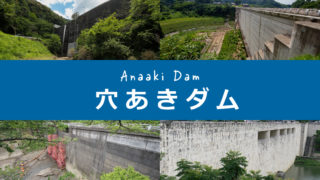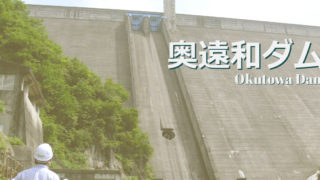buttress dam
Buttress dams, also known as "support-wall dams," are dams that use concrete walls for support. There are only six such dams in Japan, and the Mitaki Dam (Tottori Prefecture), completed in 1937, was the last buttress dam in Japan. Because cement was an expensive material before World War II, buttress dams, which require less cement than gravity-type concrete dams, attracted attention and were constructed. However, as cement became less expensive, it was difficult to find engineers to work on the formwork, maintenance was not easy and costly, and there were durability problems.
2009.12.22
Introduction to Damsdam terminology"ha" column or row of the kana syllabary
 alphabet
alphabet "a" column or row of the kana syllabary
"a" column or row of the kana syllabary "a" column or row of the kana syllabary
"a" column or row of the kana syllabary "ta" column or row of the kana syllabary
"ta" column or row of the kana syllabary